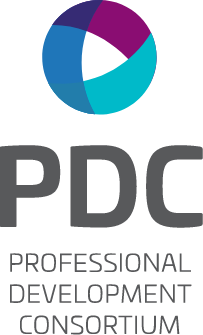You are here
Using Coaching Techniques for Effective Performance Feedback
January 27, 2022
By: Jessica Hernandez and Jessica Natkin
Attorney Evaluations. They are the bane of existence for partners, associates, and professional development professionals alike. They can take up a lot of attorney and staff time, and are often still not very useful in meeting their primary purpose: to help attorneys develop. Perhaps this is because it is common for attorney evaluations to be expressed in a format that highlights if a partner believes an associate is “above/at/below the level” expected for an attorney in their class year, followed by a written explanation of any deficiencies.
For example, an associate (let’s call him Jacob) may receive a review with the following language about his legal writing skills:
Legal Writing:
__ Above the Level Expected
__ At the Level Expected
X Below the Level Expected
COMMENTS: While Jacob demonstrates clear knowledge of concepts and his writing is generally concise and on-point, his work product is often formatted poorly and contains easily avoidable errors and typos. Jacob is encouraged to pay more attention to polishing his work product and avoiding such mistakes.
When Jacob receives this type of feedback, he will likely walk away understanding there is a deficiency. However, Jacob may not really understand how to address the problem. Furthermore, this type of admonishment and a lack of understanding about how to overcome it may heighten his stress level when working on assignments, which may exacerbate the problem.
In order to advance an attorney’s development, partners, mentors, and members of the talent team can call upon coaching skills. Rather than leaving Jacob to sink or swim after his review, what if Jacob received coaching after receiving this feedback? After all, if Jacob is successful, he increases his chances of a successful future at the firm, and the firm retains talent.
Taking a coaching approach would mean that the partner, mentor, or talent professional would work to gain an understanding of Jacob’s approach to the work. Essentially, this is a fact-finding mission that they work on together. Coaching questions to pose to Jacob in this situation might include:
- What is your reaction to this feedback?
- What do you see as your obstacles to addressing this problem?
- How do you typically approach this type of assignment?
- What feels easy to you?
- What feels challenging to you?
- What have you tried? What has worked, and what hasn’t worked?
In this way, a coaching approach turns the paradigm on its head. Rather than merely communicating to an associate that there is a problem, a coaching mindset calls for curiosity about why the associate is underperforming. This type of inquiry usually results in a deeper understanding by both parties of the steps Jacob can take to improve the work by teasing out his assumptions, approaches, habits, and fears.
In addition, once a new course of conduct is identified, coaching can hold Jacob accountable to practicing and perfecting the new pattern over time, leading to lasting change. For example, the person coaching Jacob might suggest that he take these steps on his next assignment and report back about his results.
But what if Jacob’s written work could have been improved earlier? What if Jacob didn’t have to be coached out of a negative pattern, but could rather have avoided getting into that performance hole in the first place?
With our book, Let’s Coach All the Lawyers: An Essential Primer for Developing Legal Talent, our goal is to give people tools to have these conversations sooner. Untangling these habit patterns allows junior lawyers to develop better skill sets early in the game; additionally, such course corrections are easier to implement than when an inefficient or ineffectual habit pattern becomes more ingrained over time. When both parties operate from a deeper level of honesty, their relationship improves and the work benefits as well.
In practice, this might happen the very first time that Jacob hands in written work product with errors. We would suggest that, instead of merely communicating to Jacob that the work is sub-par and underlining the errors, the partner (let’s call her Elena) would adopt the mindset that Jacob wants to do well and has the ability to do so. That conversation might go like this:
Elena: Jacob, thanks for your effort on the ABC memo. While your reasoning and research were strong, you can see from my markup that there were a fair amount of formatting and grammatical errors.
Jacob: Oh, I am so sorry. I just wanted to get you the memo quickly! I promise that I’ll be more careful and it won’t happen again.
Elena: I appreciate that this is hard for you to hear, especially on your first assignment. And I can tell by the quality of your research that you really put a lot into your work. I know you can do better, and I want you to succeed. Can we talk about your process? Once you had the elements in place, how did you work to refine it?
Jacob: I was very concerned about the client deadline on Thursday, and I wanted to get it to you early so that you had ample time to review it. By Sunday afternoon, I had all of the elements in place, but I probably didn’t read through it slowly as many times as I should have in order to perfect it.
Elena: I appreciate that you wanted to give me enough time to review it. What do you think we could do to make this better next time?
Jacob: Perhaps I should check in with you if my research takes longer than expected, to see how much time you need to review it after I hand it in to you?
Elena: That sounds like a good idea. I would really rather you spend a bit more time refining it than rush it to me when you don’t feel confident about it. How about next time you send me a status report ahead of the deadline, so that we can decide how to move forward?
Jacob: Thank you! I really appreciate your understanding.
This is a simple illustration of the huge difference a coaching approach can make for attorney supervisors. In this example, Elena showed elements of a “coaching mindset,” including curiosity, calmness, and clarity. In addition, she adopted the coaching skills of active listening, powerful questioning, and brainstorming.
In Let’s Coach All the Lawyers, we provide many more specific techniques from the world of coaching that supervisors can employ to great effect in developing their teams. Conversations like these can allow the legal industry to make the most of its talent and greatly enhance law firm environments as better places to work.


